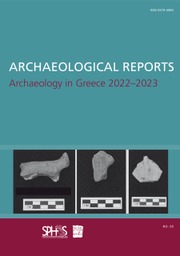No CrossRef data available.
Article contents
4 Archaeological fieldwork and research in Euboea: 2014–2024
Published online by Cambridge University Press: 30 December 2024
Abstract
The last decade has been a fruitful period for the archaeology of Euboea. New and ongoing work includes research projects, survey, rescue, and systematic excavations, led by the Ephorate of Antiquities of Euboea of the Hellenic Ministry of Culture (henceforth EAE) and the foreign schools active on the island. In the northern part of the island, protection and restoration of monuments and collections has been the focus of work in various towns (Oreoi, Histiaea, Limni, Aedipsos), and a few sites have been explored (Kerinthos, Cape Artemision). In central Euboea, construction works have allowed for further insights on ancient settlements (Aliveri, Chalkida, Manika, Psachna–Kastella), while systematic excavation projects have explored sites and cultic activities from the Bronze Age to the Archaic time (Amarynthos, Lefkandi–Xeropolis), as well as athletic institutions of the Classical to Roman periods (Eretria). The ancient map of the southern part of Euboea has been enriched (Kapsouri Kaphirea and in the Bouros-Kastri, Kampos, and Katsaronio plains) during multiple survey explorations, leading to further systematic excavations (Gourimadi, Plakari), while extensive research has also now begun in the ancient quarries and the drakospita. New publications on previously investigated sites (Gkisouri, Zarakes, Karystos) and on underwater explorations completes the picture.
Information
- Type
- Archaeology in Greece 2023–2024
- Information
- Copyright
- © The Author(s), 2024. Published by Cambridge University Press on behalf of the Society for the Promotion of Hellenic Studies and the British School at Athens

